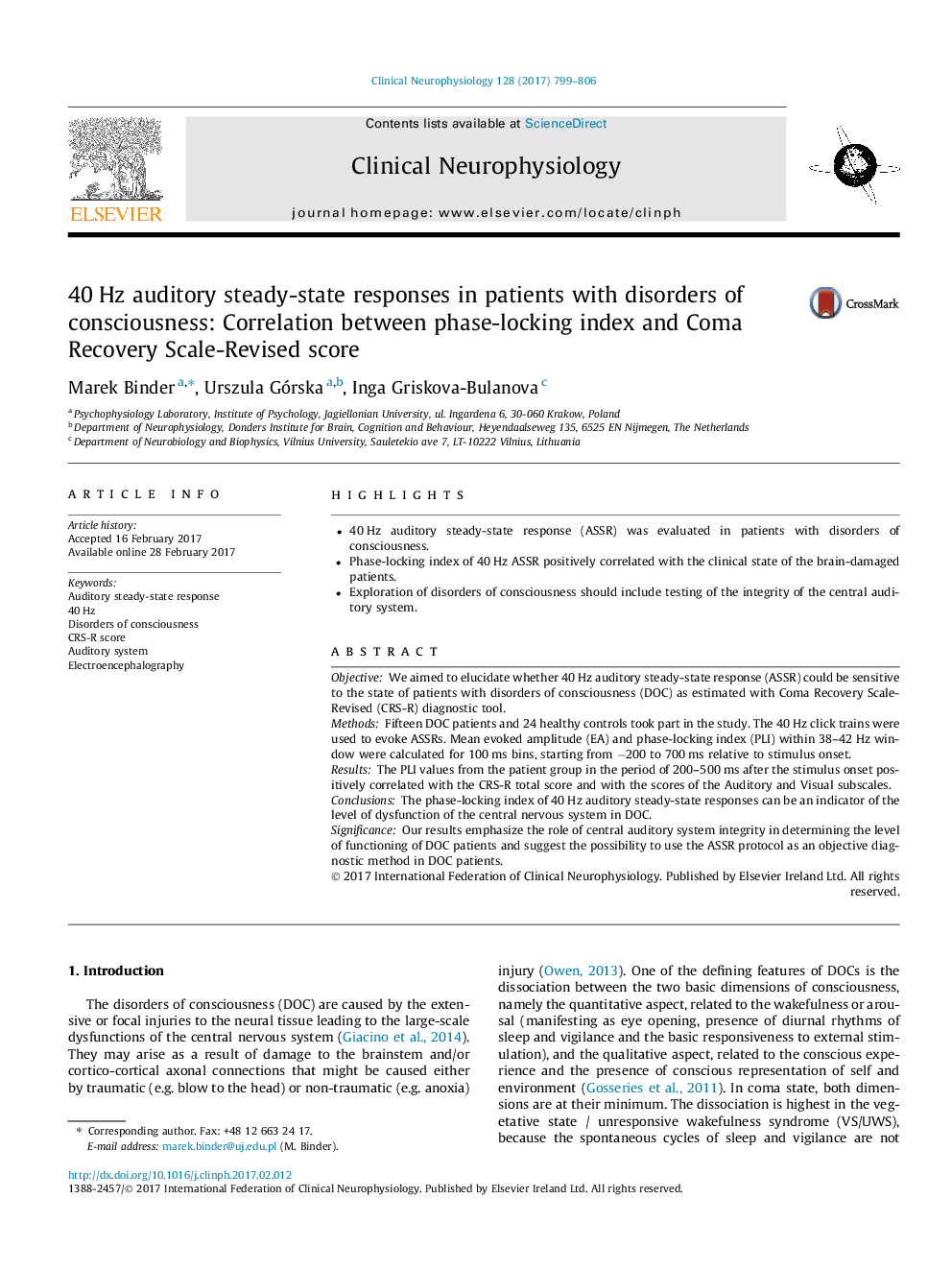| Article ID | Journal | Published Year | Pages | File Type |
|---|---|---|---|---|
| 5627669 | Clinical Neurophysiology | 2017 | 8 Pages |
â¢40 Hz auditory steady-state response (ASSR) was evaluated in patients with disorders of consciousness.â¢Phase-locking index of 40 Hz ASSR positively correlated with the clinical state of the brain-damaged patients.â¢Exploration of disorders of consciousness should include testing of the integrity of the central auditory system.
ObjectiveWe aimed to elucidate whether 40Â Hz auditory steady-state response (ASSR) could be sensitive to the state of patients with disorders of consciousness (DOC) as estimated with Coma Recovery Scale-Revised (CRS-R) diagnostic tool.MethodsFifteen DOC patients and 24 healthy controls took part in the study. The 40Â Hz click trains were used to evoke ASSRs. Mean evoked amplitude (EA) and phase-locking index (PLI) within 38-42Â Hz window were calculated for 100Â ms bins, starting from â200 to 700Â ms relative to stimulus onset.ResultsThe PLI values from the patient group in the period of 200-500Â ms after the stimulus onset positively correlated with the CRS-R total score and with the scores of the Auditory and Visual subscales.ConclusionsThe phase-locking index of 40Â Hz auditory steady-state responses can be an indicator of the level of dysfunction of the central nervous system in DOC.SignificanceOur results emphasize the role of central auditory system integrity in determining the level of functioning of DOC patients and suggest the possibility to use the ASSR protocol as an objective diagnostic method in DOC patients.
